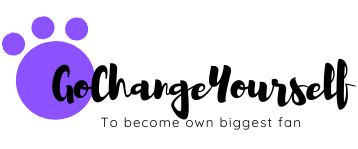In today’s hyper-connected world, the need for a Digital Detox has never been more critical. Our screens demand attention, robbing us of precious time for mindfulness, creativity, and genuine human connection.
Whether it’s the constant buzz of notifications or the lure of endless scrolling, stepping away from digital overload is essential for maintaining mental clarity and overall well-being. In this article, we explore 10 powerpack digital detox hacks that not only provide a breather for your mind but also instill healthier habits for a balanced life.
Table of Contents
1. Create a Screen-Free Morning Routine
Starting your day with a Digital Detox can set the tone for a calm, focused day. Begin with offline activities such as stretching, journaling, or meditation before you check your phone.
Establish a dedicated spot in your home for morning rituals. Avoid screens until you’ve set positive intentions for the day.
2. Designate Tech-Free Zones at Home
Transform parts of your living space into sanctuaries free from digital distractions. Establishing a tech-free zone—like a bedroom or dining area—helps to foster real conversations and encourages a peaceful environment.
Place reminders such as “Digital Detox Zone” signs on doors to keep your family and guests mindful of these areas.
3. Schedule Regular Offline Hours
Planning periods throughout your day when you consciously disconnect is key to a successful Digital Detox. Set specific times where screens are off-limits—this could be during meals, family time, or before bedtime.
Consider using apps that help schedule downtime, or simply set an alarm to remind you when it’s time to disconnect.
4. Embrace Nature and Outdoor Activities
Nature offers the ultimate antidote to digital overload. Spending time outdoors can reset your mind, boost creativity, and reduce stress.
Schedule weekly outdoor activities such as hiking, gardening, or simply walking in a local park. Let nature be your personal therapist.
5. Practice Mindfulness and Meditation
Incorporating mindfulness and meditation into your daily routine is a powerful Digital Detox strategy. It helps to center your thoughts and provides clarity amidst the constant digital chatter.
Dedicate at least 10 minutes a day to mindfulness practices, using guided meditations or simply focusing on your breathing. This practice can transform your mental landscape.
6. Adopt a Minimalist Approach to Social Media
Social media can be overwhelming with its endless updates and notifications. A digital detox hack is to audit your social media usage—unfollow accounts that don’t add value and limit your browsing time.
Use digital well-being tools to monitor your usage and set time limits for each platform, ensuring you use social media mindfully.
7. Engage in Offline Hobbies and Creative Outlets
Rediscover passions that don’t require a screen. Whether it’s painting, reading, cooking, or playing a musical instrument, engaging in offline hobbies can refresh your mind and spark creativity.
Schedule regular time each week to devote to these activities, turning your focus from digital distractions to tangible skills and interests.
8. Implement a Digital Curfew
A digital curfew is an effective method to promote better sleep hygiene and mental clarity. Set a specific time in the evening when you power down all devices—this creates a quiet, tech-free environment conducive to relaxation.
Consider creating a nightly ritual, such as reading a book or practicing gentle yoga, to ease the transition from screen time to sleep time.
9. Cultivate In-Person Relationships
Nothing replaces the depth of face-to-face interactions. Prioritize real-life connections over virtual ones by organizing meetups, joining local groups, or simply making time for a coffee date.
A genuine conversation can offer emotional support and remind you that the digital world isn’t the only source of meaningful interaction.
10. Track Your Digital Usage
Awareness is the first step towards change. Many smartphones and computers have built-in tools to monitor digital usage. Review your statistics regularly to identify patterns and set realistic goals for reducing screen time.
Use this data to adjust your habits and celebrate small victories as you gradually reclaim your time from digital distractions.
Conclusion
Implementing a Digital Detox doesn’t mean abandoning technology altogether—it’s about striking a healthy balance between the digital and real world. By following these 10 revolutionary hacks, you can create a lifestyle that nurtures mental well-being, sparks creativity, and fosters deeper human connections.
Embrace these actionable steps to reduce screen time, reconnect with nature, and most importantly, enjoy a healthier, more mindful existence. The journey to a healthier mind starts with the conscious decision to step back, breathe, and live intentionally in a digitally saturated world.
Top 20 FAQs
Q1: What is a Digital Detox?
A1: A Digital Detox involves reducing or eliminating digital device usage to improve mental clarity and overall well-being.
Q2: Why is a Digital Detox important?
A2: It helps combat stress, anxiety, and burnout while promoting mindfulness, creativity, and better interpersonal relationships.
Q3: How can I start a Digital Detox routine?
A3: Begin by creating screen-free routines in the morning, designating tech-free zones, and scheduling regular offline hours.
Q4: What are the benefits of a Digital Detox?
A4: Benefits include improved focus, reduced stress, enhanced sleep quality, and more meaningful real-life interactions.
Q5: How do I create a screen-free morning routine?
A5: Start your day with activities like meditation, stretching, or journaling before checking your phone.
Q6: What are tech-free zones?
A6: These are designated areas in your home, such as bedrooms or dining rooms, where digital devices are not allowed.
Q7: How can outdoor activities help in a Digital Detox?
A7: Spending time in nature can reduce stress, boost creativity, and help reset your mental state away from digital distractions.
Q8: What role does mindfulness play in a Digital Detox?
A8: Mindfulness and meditation help center your thoughts and provide clarity by reducing the constant bombardment of digital information.
Q9: How can I minimize social media usage?
A9: Unfollow non-essential accounts, set time limits using digital well-being tools, and consciously audit your social media habits.
Q10: What are some examples of offline hobbies?
A10: Consider activities such as reading, painting, gardening, cooking, or playing a musical instrument to engage in offline creativity.
Q11: How does a digital curfew improve sleep?
A11: A digital curfew limits exposure to blue light before bed, helping to regulate your sleep cycle and promote relaxation.
Q12: Can tracking digital usage really help me detox?
A12: Yes, monitoring your screen time helps identify patterns and motivates you to make changes for healthier habits.
Q13: How often should I disconnect from digital devices?
A13: Try to incorporate daily offline periods and consider a full digital detox once a week for a significant break.
Q14: What tools can help me manage screen time?
A14: Many smartphones and computers offer built-in screen time trackers and digital well-being apps to monitor and limit usage.
Q15: Is it possible to maintain professional productivity while on a Digital Detox?
A15: Yes, with proper planning and designated offline work periods, you can balance professional responsibilities and digital detox.
Q16: How can I encourage my family to participate in a Digital Detox?
A16: Set family tech-free zones, plan offline activities together, and establish a collective digital curfew to promote togetherness.
Q17: What are the psychological effects of excessive screen time?
A17: Overexposure can lead to increased anxiety, depression, reduced attention span, and poor sleep quality.
Q18: How do I know if I need a Digital Detox?
A18: Signs include feeling overwhelmed by notifications, constant distractions, reduced productivity, and a lack of real-life engagement.
Q19: Can a Digital Detox improve my creativity?
A19: Yes, by stepping away from digital clutter, you can clear your mind and stimulate creative thinking and problem-solving.
Q20: What is the first step towards a successful Digital Detox?
A20: The first step is awareness—track your digital usage to understand your habits, then set clear, actionable goals to reduce screen time.
-
What to do After Layoff ? | 7 Steps to Bounce Back Stronger and Smarter
Losing your job is one of those moments that just hits differently. It’s not just about the paycheck—it’s about routine, identity, even pride. One minute you’re gearing up for a busy quarter, and the next, you’re trying to figure out what the heck just happened. If you’re sitting there wondering what to do after layoff,…
-
How to Avoid Fast Food Cravings? | 6 Quick Ways to Start
Let’s be honest — resisting fast food can feel like an uphill battle. It’s everywhere: billboards, apps, street corners. And when you’re tired, stressed, or just plain hungry, it calls your name louder than anything else. But here’s the truth: avoiding fast food cravings isn’t about being superhuman. It’s about setting yourself up for success…
-
7 Must-Have Healthy Food for Healthy Liver | Long-Term Wellness
Let’s be real—most of us don’t think about our liver unless something’s wrong. But this quiet little organ is doing so much behind the scenes. It filters toxins, helps with digestion, balances hormones, and even stores nutrients your body needs later. Basically, your liver is the MVP of your internal health squad. So, if you…







